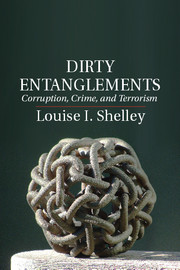Book contents
- Frontmatter
- Dedication
- Contents
- Figure, Maps, and Tables
- Acknowledgments
- Introduction
- Part I The Logic of Corruption, Crime, and Terrorism
- Part II The Diverse Businesses of Terrorism
- 5 The Business of Terrorism and Criminal Financing of Terrorism
- 6 The Drug Trade
- 7 The Less Policed Illicit Trade
- 8 Ultimate Fears
- Conclusion
- Index
- References
6 - The Drug Trade
The Profit Center of Criminals and Terrorists
Published online by Cambridge University Press: 05 August 2014
- Frontmatter
- Dedication
- Contents
- Figure, Maps, and Tables
- Acknowledgments
- Introduction
- Part I The Logic of Corruption, Crime, and Terrorism
- Part II The Diverse Businesses of Terrorism
- 5 The Business of Terrorism and Criminal Financing of Terrorism
- 6 The Drug Trade
- 7 The Less Policed Illicit Trade
- 8 Ultimate Fears
- Conclusion
- Index
- References
Summary
The Drug Trade: A Political Act
A captured Taliban underscored, “Whether it is by opium or by shooting, this is our common goal [to harm all infidels as part of jihad].” This concept of harm causation through criminal activity has not only been seen among jihadi terrorist groups but was given as a justification for the drug trade in Peru decades ago. “Coca cultivation is a political act in a much fuller sense than is conventional criminal behavior. By cultivating coca, one is not only enhancing one’s own income, one is also contributing – intentionally or unintentionally, directly or indirectly to Sendero Luminoso’s efforts to depose the government.” Using the drug trade as part of a terrorist strategy sets terrorists apart from ordinary criminals. They have a political as well as a financial agenda. But terrorists engage in the drug trade, as do a wide variety of actors – criminals, insurgents, and corrupt officials – because it generates large profits relative to investment. In the drug trade we see visible and consistent dirty entanglements that are key to its successful operation. Drug trade is a crime of choice for diverse nonstate actors because risks of confiscation and arrest are relatively small relative to potential gains.
- Type
- Chapter
- Information
- Dirty EntanglementsCorruption, Crime, and Terrorism, pp. 218 - 258Publisher: Cambridge University PressPrint publication year: 2014



